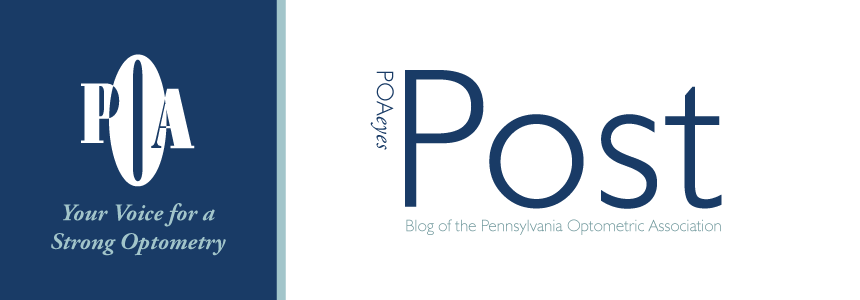Pennsylvania
Optometric Association recommends good hygiene practices for contact lens
wearers while swimming
Harrisburg, May 27, 2015 – Flocking to local pools,
waterparks, or larger bodies of water, Americans will attempt to escape the
heat this summer to enjoy a relaxing day away. However, contact lens wearers
sometimes forget important sanitation rules and risk infection by wearing their
contacts around water, which often contains bacteria. According to the American
Optometric Association’s (AOA) 2015 American Eye-Q® Survey, nearly 25 percent of
those surveyed admit to swimming in their contact lenses. The Pennsylvania
Optometric Association (POA) offers contact lens wearers safety tips on how to
keep their eyes healthy during the approaching summer days.
Think of contact lenses as
‘sponges’
According
to the FDA and the POA, contact lenses should not be exposed to any kind of
water, including tap water. The American Eye-Q® Survey found
that 53 percent of contact wearers claim they shower while wearing their
lenses.
Contact lenses are similar to sponges in that they will
absorb whatever is in the water, including chemicals or bacteria. Acanthamoeba,
a rare, but sight-threatening germ, can be found in freshwater lakes, rivers
and unclean tap or well water. It can cause the painful eye infection
Acanthamoeba keratitis. In the most severe cases of this infection, a corneal
transplant may be required or the end result could be blindness.
If a contact lens is accidentally splashed with water, use
artificial tears to lubricate and float the lens on the eye, wash and dry your
hands before removing the lens, then clean and disinfect the lens with fresh
sterile solution. If the lens is disposable, throw it away. If more pain or
redness than normal occurs in the eyes after being in a pool, call an
optometrist as soon as possible.
Water increases the
need for UV protection
The POA stresses that the importance of UV protection
applies to everyone, despite age, especially when around water. For instance,
sand and water at the beach can reflect an additional 25 percent of UV rays,
increasing the risk of damage to one’s eyes.
Just a few hours of intense exposure to sunlight out by the
pool or on the beach could potentially causes photokeratitis, known also as the
‘sunburn of the eye,’ which can cause red eyes, a foreign-body sensation or
gritty feeling in the eyes, extreme sensitivity to light and excessive tearing.
For optimal eye-sun safety, the POA recommends wearing
sunglasses that block out 99 to 100 percent of both UV-A and UV-B rays. The AOA
has a guide for choosing sunglasses here.
Water sports and eye safety
An
optometrist can recommend the best options for those in need of vision
correction while enjoying the water. For swimming and water skiing, well-fitted
prescription goggles that offer vision correction may be an option. If one is
looking for vision correction and protection against harmful UV rays, the
durable, expertly fitted pair of prescription sun eyewear may be ideal. Once
out of the water, individuals need to ensure their hands are clean before
inserting new contact lenses.
If a
patient doesn’t want to wear prescription goggles or sun eyewear, his or her
optometrists may prescribe daily disposable contact lenses, which offer optimum
sanitation since they are made to be thrown out every day. Patients still need
to be very careful to avoid tap, chlorinated, or salt water getting in their
eyes while wearing contacts. While goggles are the recommended solution for
protection, disposable lenses make it easy to replace any contaminated lens
with a fresh one.
Should
an ocular emergency occur, your local optometrist can help prevent an eye
infection or other serious damage from happening. Your eye doctor can answer
questions over the telephone and recommend offices or emergency rooms for
treatment and care. Click here to review the AOA Sports Vision Section ocular
emergency triage card.
Whether
aiming to champion the tallest water slide or set a new goal on water skis,
remember to practice good hygiene and safety with contact lenses. Visit your
optometrist annually, or more if directed, to ensure your eyes are healthy and
remain that way. For additional resources about contact lens hygiene and
safety, visit contactlenssafety.org or aoa.org. Find an eye doctor near you at www.poaeyes.org.
About the Pennsylvania Optometric
Association (POA):
The Pennsylvania Optometric Association is the
professional organization for over 1,250 doctors of optometry in Pennsylvania.
An affiliate of the American Optometric Association, POA promotes the highest
quality eye and vision care by optometrists, represents optometry to state
government, provides its members with post-graduate education and membership
benefits, and conducts activities in the interest of the visual welfare of the
public. For more information, visit www.poaeyes.org.
About the American Eye-Q® survey:
The 10th annual American Eye-Q® survey
was created and commissioned in conjunction with Penn, Schoen & Berland
Associates (PSB). From February 19-March 4, 2015, PSB conducted 1,000
online interviews among Americans 18 years and older who embodied a nationally
representative sample of the U.S. general population. (Margin of error is plus
or minus 3.10 percentage points at a 95 percent confidence level.)
About the American Optometric
Association (AOA):
The American Optometric Association, a federation of state, student and
armed forces optometric associations, was founded in 1898. Today, the AOA is
proud to represent the profession of optometry, America’s family eye doctors,
who take a leading role in an individual’s overall eye and vision care, health
and well-being. Doctors of optometry (ODs) are the independent primary health care professionals for the eye and have
extensive, ongoing training to examine, diagnose, treat and manage disorders,
diseases and injuries that affect the eye and visual system, providing
two-thirds of primary eye care in the U.S. For information on a variety of eye
health and vision topics, and to find an optometrist near you, visit aoa.org.
